Two extremes here today. First, the hottest, most steamy, & the most clammy day we have ever experienced. Having lived previously in Florida, Texas, & North Carolina, they pale in comparison. Second, the most educational, captivating, & inspirational!
I’ll start with a description of the area.
 Nosy Be is an island just off the northwest coast of Madagascar (around 5 miles) and means “big island” in the Malagasy language. It’s Madagascar’s largest island – volcanic in nature, and has an area of about 120 square miles. The geography is very diverse. The east coast has lowlands leading to steep bluffs and central highlands. The Tsaratanana Massif in the north has volcanic mountains. The west coast has many protected harbors and broad plains, while the southwest is a plateau & desert region. They have two seasons here – hot & rainy from November to April, & cooler & dry from May to October. The heat we experienced was overwhelming for many – we had four passengers pass out during our tour. No serious or life-threatening situations, but the heat & humidity were barely tolerable. Southeastern trade winds dominate, and they say they have occasional hurricanes. Madagascar’s long isolation from the neighboring continents has resulted in a unique mix of plants & animals, many found nowhere else in the world; some ecologists refer to Madagascar as the “eighth continent”. The eastern, or windward side of the island is home to tropical rainforests, while the southeastern and southern sides of the island, which lie in the rain shadow of the central highlands, are home to tropical dry forests, deserts, and shrub lands. The Malagasy people enjoy rich & fascinating cultural traditions, many of which arise from the hybrid ethnic blend that characterizes the society today.
Nosy Be is an island just off the northwest coast of Madagascar (around 5 miles) and means “big island” in the Malagasy language. It’s Madagascar’s largest island – volcanic in nature, and has an area of about 120 square miles. The geography is very diverse. The east coast has lowlands leading to steep bluffs and central highlands. The Tsaratanana Massif in the north has volcanic mountains. The west coast has many protected harbors and broad plains, while the southwest is a plateau & desert region. They have two seasons here – hot & rainy from November to April, & cooler & dry from May to October. The heat we experienced was overwhelming for many – we had four passengers pass out during our tour. No serious or life-threatening situations, but the heat & humidity were barely tolerable. Southeastern trade winds dominate, and they say they have occasional hurricanes. Madagascar’s long isolation from the neighboring continents has resulted in a unique mix of plants & animals, many found nowhere else in the world; some ecologists refer to Madagascar as the “eighth continent”. The eastern, or windward side of the island is home to tropical rainforests, while the southeastern and southern sides of the island, which lie in the rain shadow of the central highlands, are home to tropical dry forests, deserts, and shrub lands. The Malagasy people enjoy rich & fascinating cultural traditions, many of which arise from the hybrid ethnic blend that characterizes the society today. This is where the captivating experience begins – the Malagasy tribes - unlike anything we've ever seen. For years, I would sit in front of the television watching National Geographic & the Discovery Channel. The natives & tribes of Madagascar seemed imaginary & dreamlike – I would think…”surely, people don’t really still live that way in our modern world”. Our experience today was like stepping into a storybook, or physically joining a National Geographic documentary on-location. An incredible, mindboggling experience – so amazing & so rewarding. We were prepared for the location itself, having attended lectures prior to our arrival – we knew where we were going geographically, but didn’t quite grasp the environment & setting we were about to experience.
This is where the captivating experience begins – the Malagasy tribes - unlike anything we've ever seen. For years, I would sit in front of the television watching National Geographic & the Discovery Channel. The natives & tribes of Madagascar seemed imaginary & dreamlike – I would think…”surely, people don’t really still live that way in our modern world”. Our experience today was like stepping into a storybook, or physically joining a National Geographic documentary on-location. An incredible, mindboggling experience – so amazing & so rewarding. We were prepared for the location itself, having attended lectures prior to our arrival – we knew where we were going geographically, but didn’t quite grasp the environment & setting we were about to experience.
There’s no pier in Nosy Be – nothing large or modern enough enabling a ship of our size to dock. We knew ahead of time we would be anchoring in a bay and ‘tendering’ ashore. We arrived at the northern tip of the island around 7:30am, and still had about 10 miles to sail before reaching our anchoring target. Having had breakfast earlier, we were now sitting out on our deck watching the beautiful scenery unfold. We began to see small boats in the distance – first a few, then several. Using the binoculars, I was able to determine that these were island natives paddling toward our ship in some of the most crude & primitive boats I’ve ever seen. Some were equipped with improvised, do-it-yourself sails, clearly handmade from several sources of used materials. Many of these structures looked like they had been carved from tree trunks, and probably were. One boat had 3 occupants, what appeared to be a mother, father, & son. The parents were busy paddling, while the son was frantically (and I think desperately) bailing water from the boat in a plastic bucket. By the time we reached our destination and the anchor started descending, we were surrounded by dozens of these primitive boats – some with one occupant, some with entire families – all were friendly – most all were begging for money or cloths – some were trying to sell bananas out of bushel baskets – one was even trying to sell HUGE, live crabs. I’m not sure what some of them were thinking…how can you possibly complete a product sale from a tiny boat to a passenger leaning over a rail from several stories above?? Even if you could, what would you do with a ‘live’ crab on board?? Many natives were pleading…”cloths for my baby…shoes please…t-shirts please…dollar, dollar, dollar”. There are signs posted throughout the ship and in all outside cabins…”Never Throw Anything Overboard”. In a true and very touching charitable spirit of giving and helping those less fortunate, the ship’s crew overlooked the rulebook (to their credit) as hundreds of items were dropped from literally every deck and from both sides. As you would expect, most of the offerings were off target & hit the ocean, but the natives didn’t mind – they were diving from their boats to retrieve the donations and as they surfaced with their rewards, all had wide smiles of joy! Some passengers actually packed multiple items and bundled them in large plastic bags – they hit the water with quite an impact!


Our ship was surrounded by dozens of these canoes with natives begging, or trying to sell trinkets & fruit
 Our tour was scheduled to leave the ship at 9:10 – we were to board the ‘tenders’ or lifeboats for a short trip to the small local dock. Not surprising, there were 280 folks booked for this particular tour – a journey through the jungles & native villages. We decided to hang back a little and let the predictable shovers & pushers battle their way to the front of the line – it’s always the same people and the results are always the same…there’s a seat for everyone and we ALL get there eventually! After waiting 30 minutes, we finally decide to get into what is now a short line – our tickets are processed in a matter of seconds and we’re now in the lifeboat on our way to shore. The stampede of greedy elbows who left earlier have since been waiting for us to arrive – waiting on the dock in the hot morning sun. Once we arrive, we were grouped into clusters of ten, and loaded on a fleet of "boats" for a 20-minute paddle to the main island. It was a very hot trip – it was only about 10:30 but the temperature was already close to 90. Our boats, roughly twenty in total, all hit the beach at the same time – it was like military troops unloading for battle – we were in knee-deep water, so the last few feet to shore was actually quite comical to watch. Some folks didn’t read the tour description and were wearing expensive leather shoes with socks… “Oh what shall I do now”… some had a real difficult time bailing themselves out of the boat…some were cursing…most of us were just smiling and having a great time slogging through the shallow, warm water.
Our tour was scheduled to leave the ship at 9:10 – we were to board the ‘tenders’ or lifeboats for a short trip to the small local dock. Not surprising, there were 280 folks booked for this particular tour – a journey through the jungles & native villages. We decided to hang back a little and let the predictable shovers & pushers battle their way to the front of the line – it’s always the same people and the results are always the same…there’s a seat for everyone and we ALL get there eventually! After waiting 30 minutes, we finally decide to get into what is now a short line – our tickets are processed in a matter of seconds and we’re now in the lifeboat on our way to shore. The stampede of greedy elbows who left earlier have since been waiting for us to arrive – waiting on the dock in the hot morning sun. Once we arrive, we were grouped into clusters of ten, and loaded on a fleet of "boats" for a 20-minute paddle to the main island. It was a very hot trip – it was only about 10:30 but the temperature was already close to 90. Our boats, roughly twenty in total, all hit the beach at the same time – it was like military troops unloading for battle – we were in knee-deep water, so the last few feet to shore was actually quite comical to watch. Some folks didn’t read the tour description and were wearing expensive leather shoes with socks… “Oh what shall I do now”… some had a real difficult time bailing themselves out of the boat…some were cursing…most of us were just smiling and having a great time slogging through the shallow, warm water.







Looking back from the island....our ship
The beach to the village entrance was perhaps a walk of 100 feet – that was the point where we entered the ‘living’ world of National Geographic. I stood there momentarily, looking down the first narrow street of the village, riveted… almost in a hypnotic state…and said softly to Cheryl……WOW. I say narrow street – I mean a dirt & sand path about 15 feet wide, riddled with potholes, mud, & protruding tree roots. On either side of the path were native dwellings – some made of grass with thatch roofs, some made of cinder, some made of coarsely fused trees – no window coverings, certainly no doors, and all floors simply dirt. There was no electricity anywhere. The natives were all going about their daily routines. Some were washing clothes, which consisted of laying garments on rocks & scrubbing them by hand. Some were bathing their young children in a ‘bathtub’ that was nothing more than a large cooking pot. Some were busy working on wood carvings. Some were simply lying on modest blankets under the shade of their huts to break from the hot sun. All were barefoot. The dirt streets were scorching – I could feel the extreme heat through my flip-flops and occasionally, I’d kick up some sand and it felt like blistering ashes on my feet. I guess if you’re raised in that type of environment you gradually adjust. There weren’t many smiles initially – they looked at us with as much curiosity as we looked at them. The difference…WE were entering their world. It was awkward – it was almost surreal. What do we do – what do we say?
Each night, the cabin stewards on the ship leave two beautifully wrapped chocolates on your pillow. Since the beginning of the voyage, we’ve been collecting them in a bowl. Well…MOST of them! I’ve had a few weak moments! Before our tour, I loaded the chocolate stockpile into several large plastic baggies. In total, we had nearly 200.
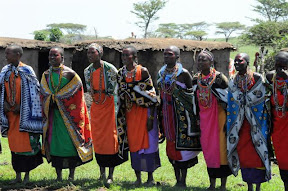 The village school was a small cinder building, again, no window coverings, no doors. There were some young boys playing basketball (barefoot), and an even younger group of girls sitting next to the building watching them. I asked our tour guide who was a native himself, if I could please give the basketball players & young spectators a piece of our candy. He said yes, but that I should approach them with the candy showing in my hand and smile. I followed his instructions. Almost in unison, broad smiles broke on their young faces – they knew I was giving them something, but didn’t quite know what. Our guide told me that many had never tasted chocolate. I watched intently as some of the first kids unwrapped and cautiously took their first bite – it was almost like a blind person seeing for the first time – TALK ABOUT EXCITED KIDS!! Every child was smiling…every child thanked me, and as we continued our walk down the street, word had somehow spread that the guy in the yellow shirt was the Candy Man. Entire families were emerging from their huts – we gave candy to not only the children, but many adults had their hands out as well…all with big, broad smiles on their faces! There are only a few very special times and moments in my life that will forever be etched in my memory & mind’s eye. These are among the special few.
The village school was a small cinder building, again, no window coverings, no doors. There were some young boys playing basketball (barefoot), and an even younger group of girls sitting next to the building watching them. I asked our tour guide who was a native himself, if I could please give the basketball players & young spectators a piece of our candy. He said yes, but that I should approach them with the candy showing in my hand and smile. I followed his instructions. Almost in unison, broad smiles broke on their young faces – they knew I was giving them something, but didn’t quite know what. Our guide told me that many had never tasted chocolate. I watched intently as some of the first kids unwrapped and cautiously took their first bite – it was almost like a blind person seeing for the first time – TALK ABOUT EXCITED KIDS!! Every child was smiling…every child thanked me, and as we continued our walk down the street, word had somehow spread that the guy in the yellow shirt was the Candy Man. Entire families were emerging from their huts – we gave candy to not only the children, but many adults had their hands out as well…all with big, broad smiles on their faces! There are only a few very special times and moments in my life that will forever be etched in my memory & mind’s eye. These are among the special few.
It was so gratifying.
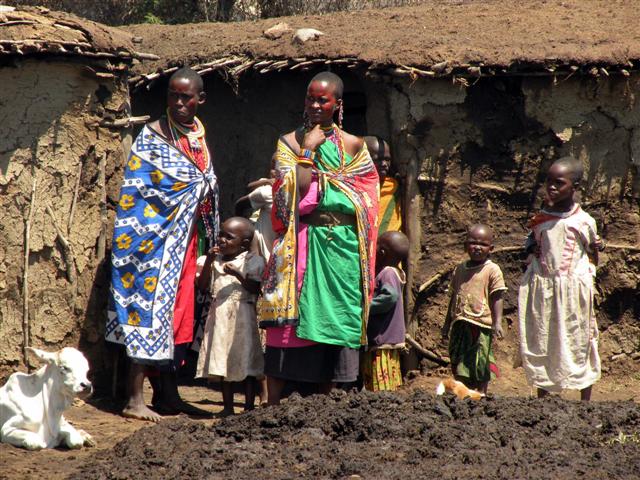






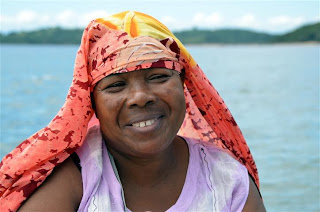

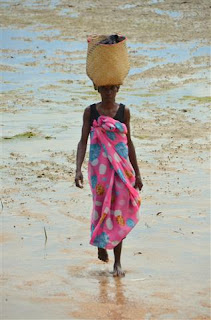




Giving Away Our Chocolate!

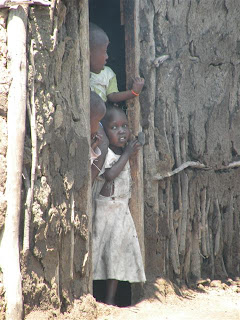





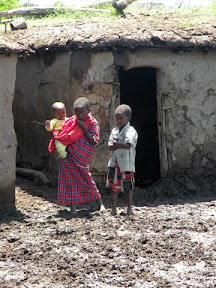
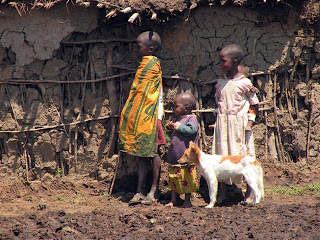



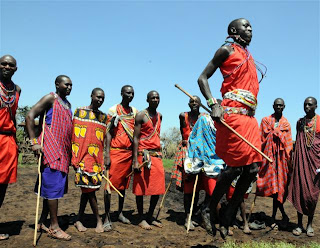






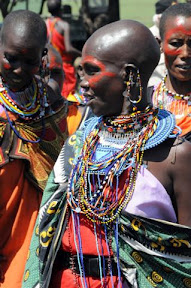
We continued on deeper into the jungle. We suddenly came upon two Lemurs – these are friendly little creatures from the monkey family that live in abundance here. They’re about the size of a very large cat. One such Lemur lowered himself from a tree branch and perched on my shoulder. He waited for me to peel back a banana and once exposed, he ate it right out my hand. A little farther down the path, our guide found a Boa roughly 6 feet in length. He picked it up and Cheryl wrapped herself up with it – she said our son Bryan would be very proud! Not for me – no thanks! We also saw several varieties of Chameleons & colorful frogs – quite large, and just running along the pathways as we stirred the underbrush.
We took a different route out of the jungle and went through another small village.
Once back at the main beachhead, a table of fresh fruit had been set up by the natives along with drinks. In addition to many passengers, the fruit dishes were also attractive to large jungle flies – we opted for the bottled beer and left it at that. Within 30 minutes, we were back on our motorized dinghy for the trip back to the dock, and as luck would have it, a ‘lifeboat’ was in the process of boarding for a return trip to the ship, so we immediately jumped on, knowing that air conditioning was now only a few minutes away.
After a shower, we grabbed a quick hot dog in the Lido, just enough to hold us until dinner. We went to our routine 4:30 gathering place (the Ocean’s Bar) for Happy Hour and as we always do, exchange stories about our various activities for the day. Today was different for me. As we began our sail away at 5:00 and the amazing villages slowly drifted out of sight, I sat quietly and reflected on a very humbling, touching day. There I was, sitting in a soft chair amidst the air conditioned comfort of a cruise ship, iced & sanitary beverage in hand, no hunger pains (slightly overweight actually) and in reasonably good health. How fortunate I am – how fortunate we ALL are. We are so blessed. To live in a village with no electricity and such primitive means & resources, particularly in this day & age, is just mind-boggling for me - & to experience their simple, unsophisticated & very challenging lifestyle firsthand sure makes me appreciate many of the small things we take for granted everyday….wearing shoes, turning on a light, using a toilet, sleeping in a bed, eating a piece of chocolate. Just as amazing – the people we met today seemed content & happy – smiles were abundant – they recognize NO other standard of living, so why shouldn’t they? May God bless them all – such beautiful people.
On our way now to Mozambique. I suspect this will be another amazing experience. We’re told the average annual income is US $800, and that the country is still rebuilding after 20 years of civil war, floods, & famine.
I wish I had more chocolate to give away.


